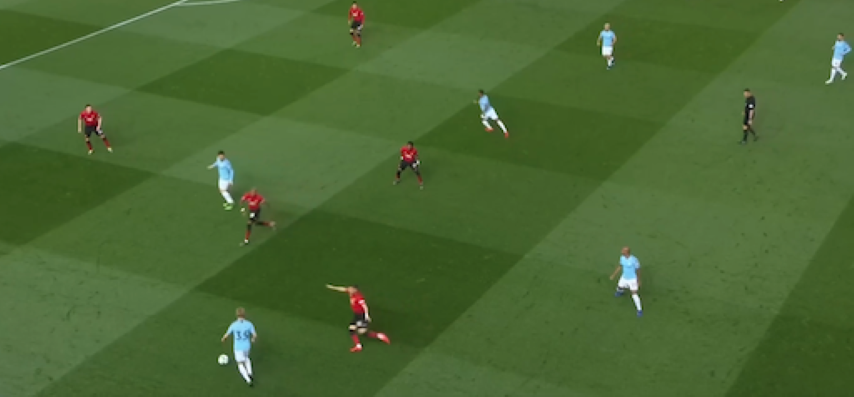WORLD CLASS COACHING
4-3-3 Defending
By Luca Bertolini
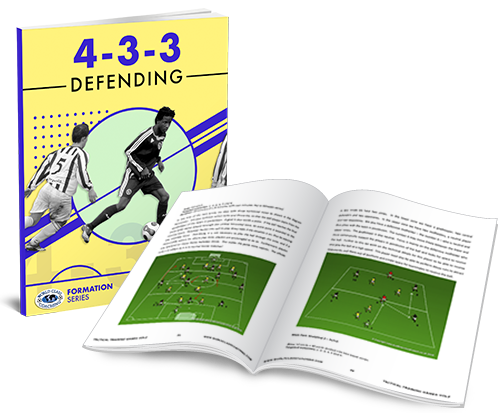
Table of Contents
PART TWO
Basic Principles of Play Without the Ball - 2
Transitions to Defend and Key Defending Principles
Basic Principles of Play Without the Ball - 2
When the pressing lines are overcome, as in this example, Liverpool retreats the positions in with very classic runs toward the goal, as in this example, where the defenders (Matip, Van Dijk and Robertson) are outnumbered against the 4 opposition forwards.
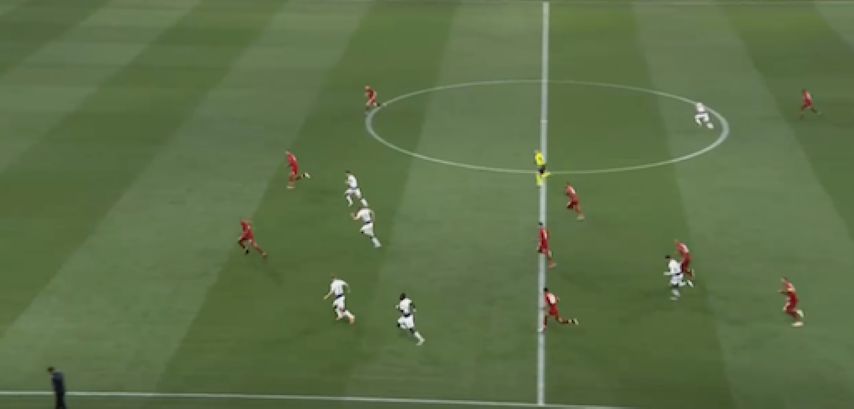
Compactness is again regained inside the box and Robertson can win the ball back inside the left first third, just out of the 18 y box.
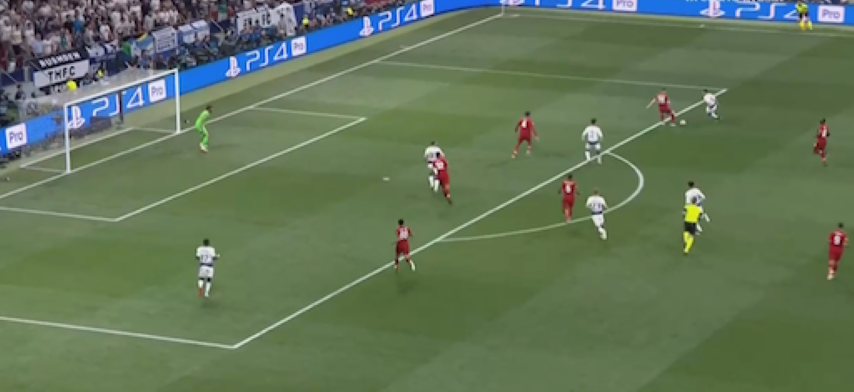
The compact 4-3-3 defense shape that can be noticed in this next picture, shows a mistake on the left side; the back 4 line is forced to stay placed along the right side to equalize the duel against 4 opposition forward.
As we analyzed above, the creation of a strong side around the ball is not Reds first aim, when playing inside the defending half.
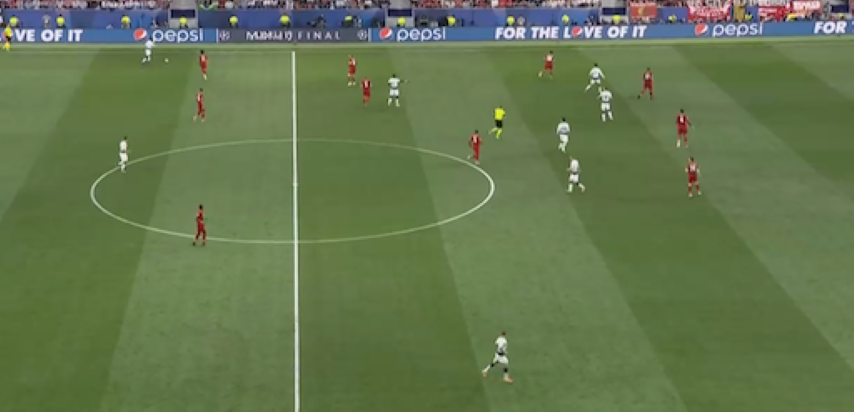
Manè is clearly on late in covering the weak side and the wide opponent along the left, as it would be requested by the balance principle we talked about before.
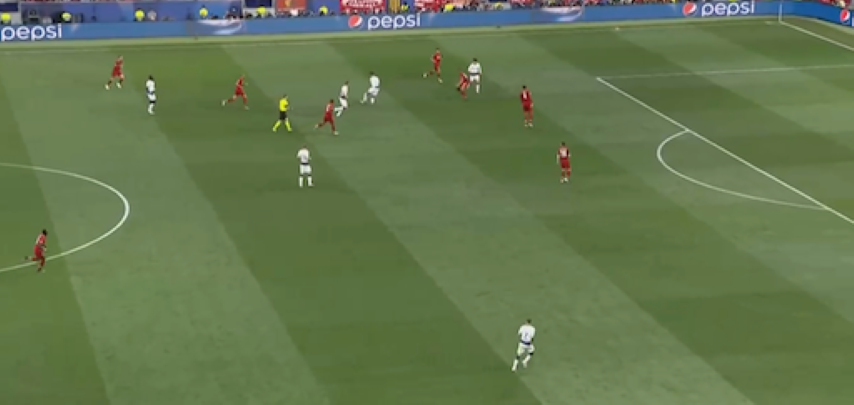
Control and Restraint – The players should pay attention to play under control, when challenging for the ball, to not make poorly timed or off-balanced attempts; otherwise, they should restrain from tackling until they are sure to recover the possession.
Manchester City tackling situations are used when the pressure areas are overcome and the opponents could play forward through free spaces without coverage; this means that they are used to block the opposition possession phases when the team is unbalanced.
In this first example, Fernandinho tackles Pogba, who could have exploit the spaces inside the defense half and with a dangerous 1 v 1 situation at the back.
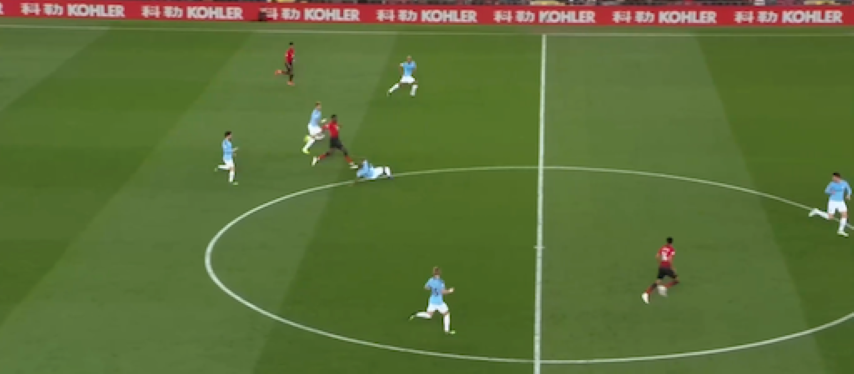
In this second situation, Zichenko tackles to opponents, who could have dribble the ball up the pitch along the defense left flank.
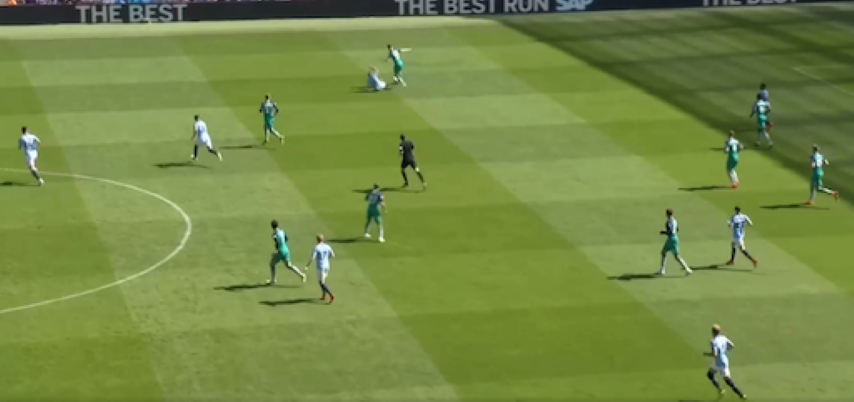
Even if the attempt was not successful and the opponent's action was not blocked, the defensive action was useful to delay the ball carrier and to cause a bad ball touch that allow City midfielders to retreat back and to close the space.
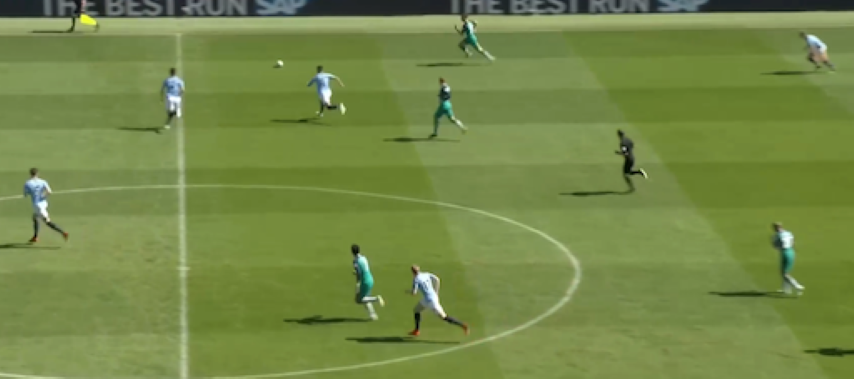
Liverpool shows a different idea about tackling situations; tackles attempts are made only if the team is balanced behind the player who tries to win the ball back.
In this first example, Henderson attempts a tackle, inside the attacking half, and Fabinho covers the center space behind him to ensure a new pressure action against the opposition ball carrier.
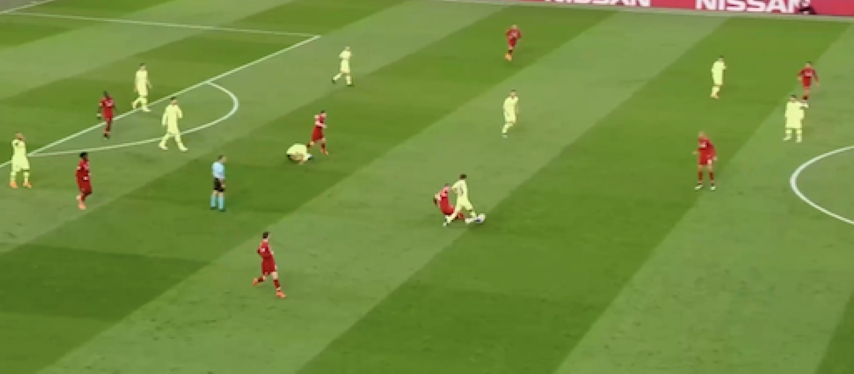
In this second example, Fabinho attempts a tackle against a double marked opponent and with the center backs who are covering the space in front of the box.
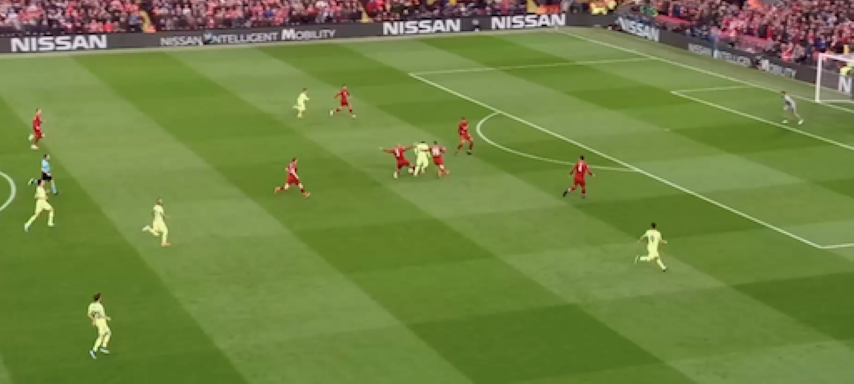
This move explains the concept very clearly; a tackle attempt is made in the middle third, but it's not successful...
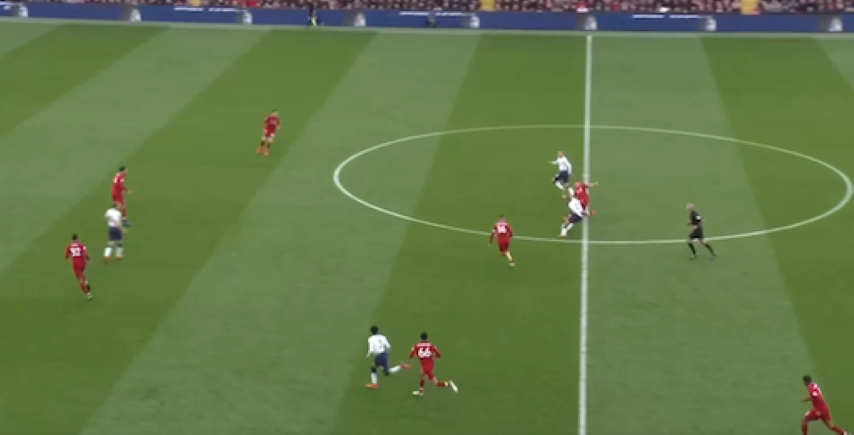
...But even if the opposition could play forward, the left fullback Robertson is ready to counter the opponent, providing balance and coverage behind the midfield line. The tackle attempt hasn't opened any space behind the ball area.
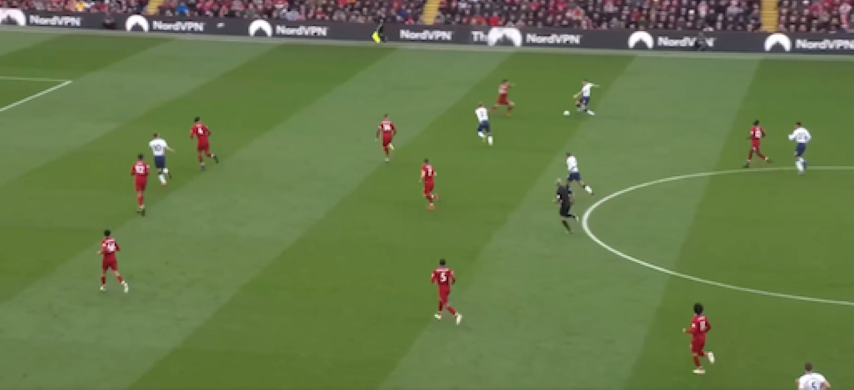
Transitions to defend and key defending principles
As 1-4-3-3 is basically an attacking team shape, it is important to apply immediate pressure against the opposition and moreover against the first player in possession before he can get his head up to dribble or to pass forward, as the ball is lost; the player who lost the possession and one more close to the area around the ball, should react immediately. All the other players should mark the potential receivers, anticipating their positioning and movements and closing the further passing lanes.
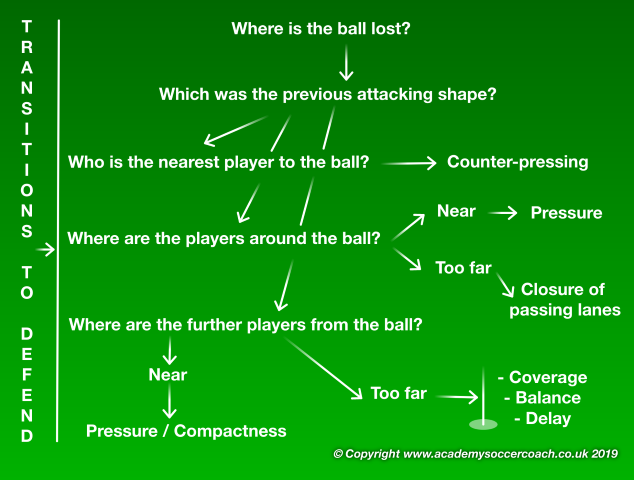
These defensive movements must be carried out with the correct timing as player to be coordinated as team, at an high intensity and speed to be sure that the opposition is unable to exploit the team’s lack of balance and to play fast counter attacks. Transitions to defend are then the moments just after the loss of possession and each area of the field require different "defending behaviors".
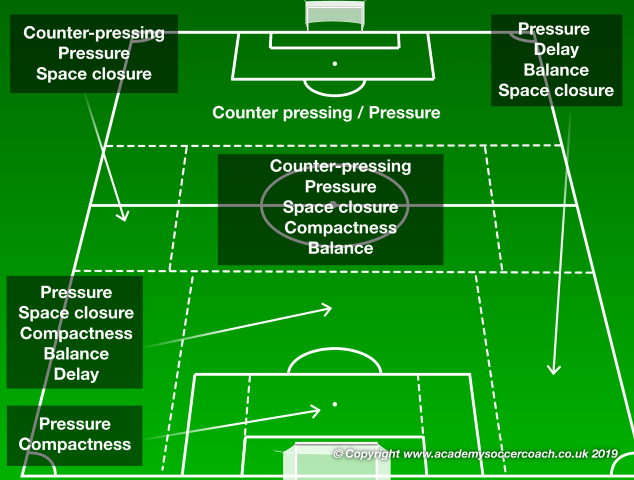
These are the most important "defense behaviors":
• Restore the planned defense formation if the transitions to defend phase doesn't allow to win the ball back
• Maintain the structure and the organization of the defense lines and keep opponents away from own goal
• Every player is responsible for own zone:
• Horizontal take over: pass players on in case of switching opponents (width of pitch)
• Vertical take over: pass players on in case of overlapping opponents (depth of pitch)
• Team compactness with short distances between lines and players inside the first third
• Defense pressure by the whole team, forcing the opponent to play wide or back or lose the ball
• Players to always coach the players in front of them (help your team mate)
But if the pressure against the first ball carrier of the opposition can be considered as a general main principle, counter-pressing becomes the most important defense weapon for the team that lost the possession, moreover for an attacking style of play, as the 1-4-3-3 is.
Here's an example of Liverpool counter-pressing
Henderson tries to play out from a pressure area (he is in a potential 1 v 3 situation), attempting a pass toward Shaqiri...
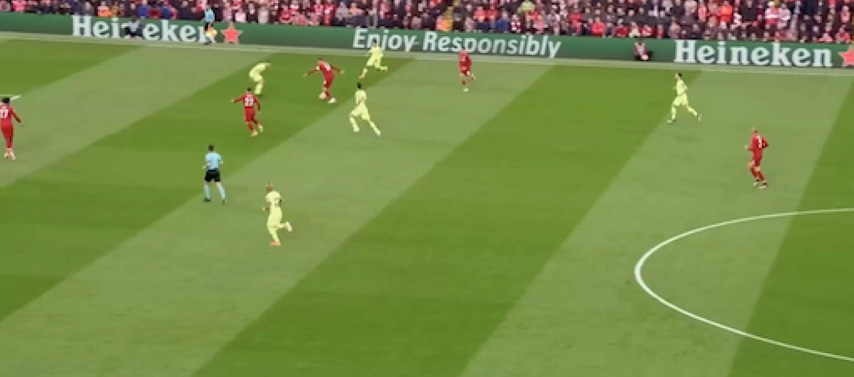
...Barcelona holding midfielder Busquets intercepts the ball and Shaqiri immediately counters him...
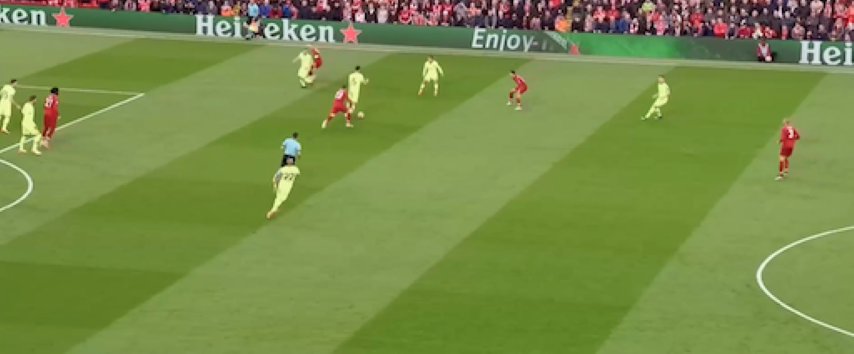
...Liverpool holding midfielder Fabinho put pressure against Barcelona second ball carrier...
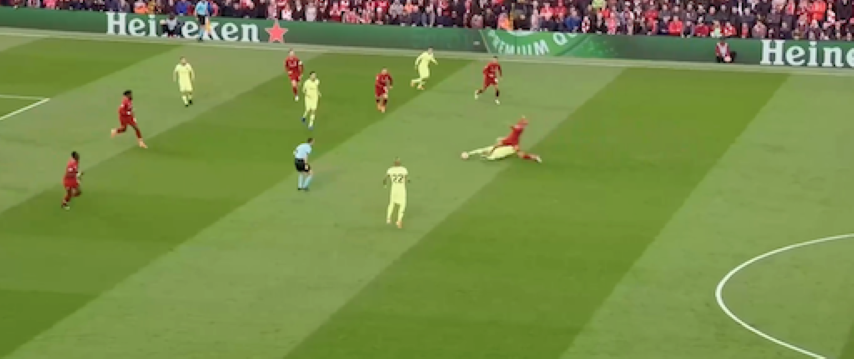
...If the opponents are able to maintain the possession, only the nearest player to the ball (Origi in this situation) put pressure, while the other player stay placed behind the ball area to close forward passing lanes...
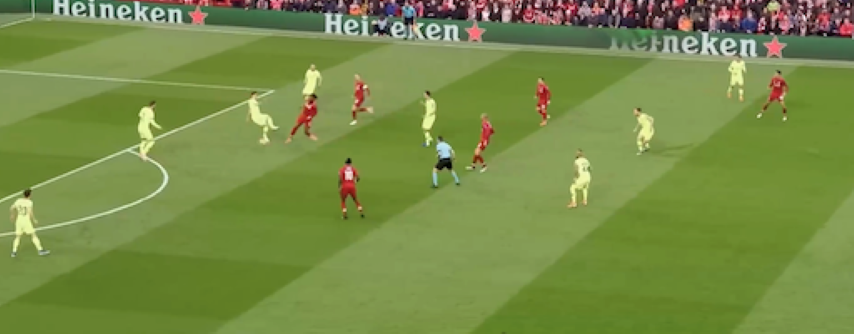
...Manè acts the same way, and Barcelona right fullback is forced to pass backward...
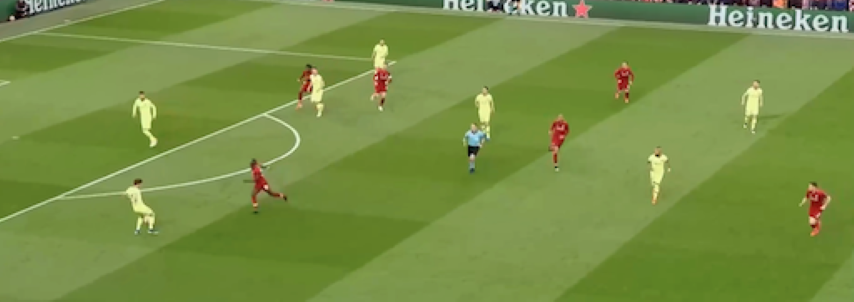
...The combination between 1 v 1 pressure against the opposition ball carrier and the closure of passing lanes through positional pressure force a long kick...
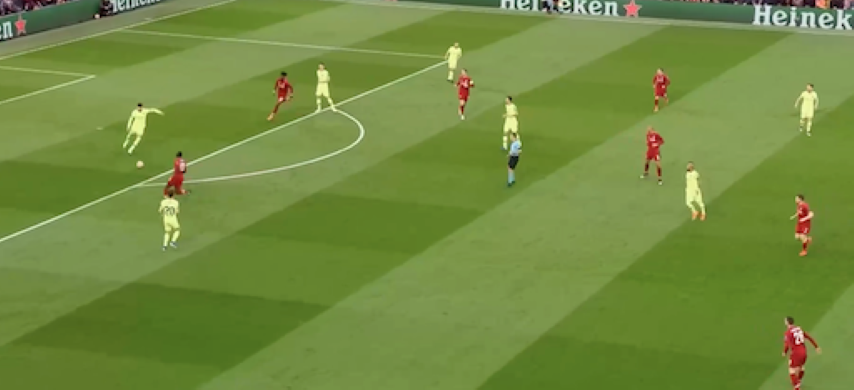
...And the depth is properly covered with a 3 v 1 duel, as the whole opposition team has been forced backward inside the defensive half through the combination of individual counter-pressing and positional pressure.
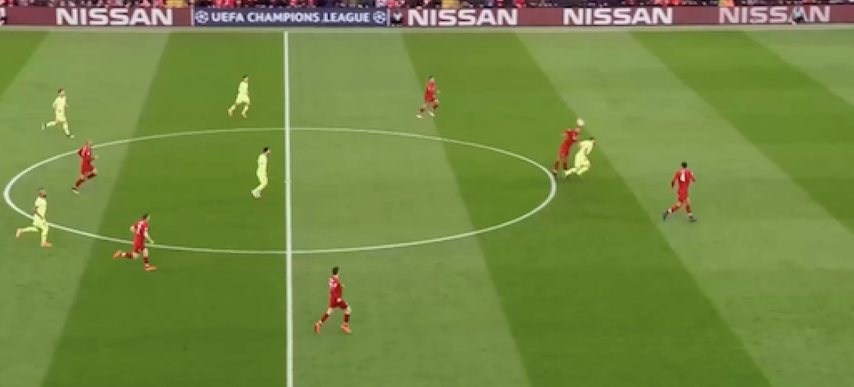
Here's an example of Manchester City more aggressive counter-pressing actions.
Bernardo Silva tries to play forward and out of the overload area on the right side of the middle third...
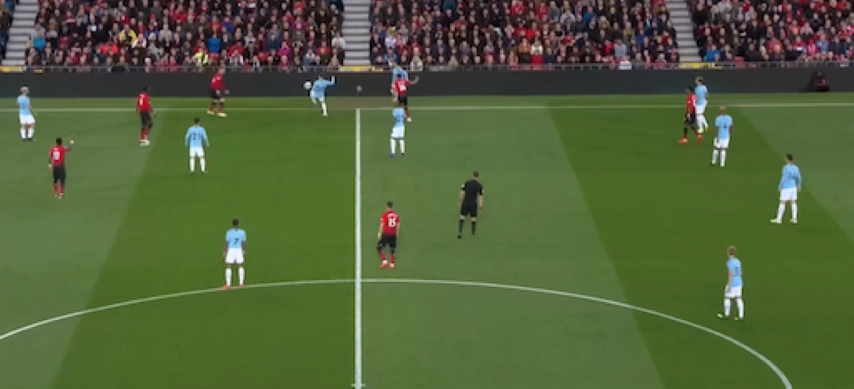
...But the pass is too long and the opposition defense can win the ball; as he first ball carrier receives, all the City players near the ball run forward to press and prevent him from playing into the middle third (Aguero, David Silva and Sterling)...
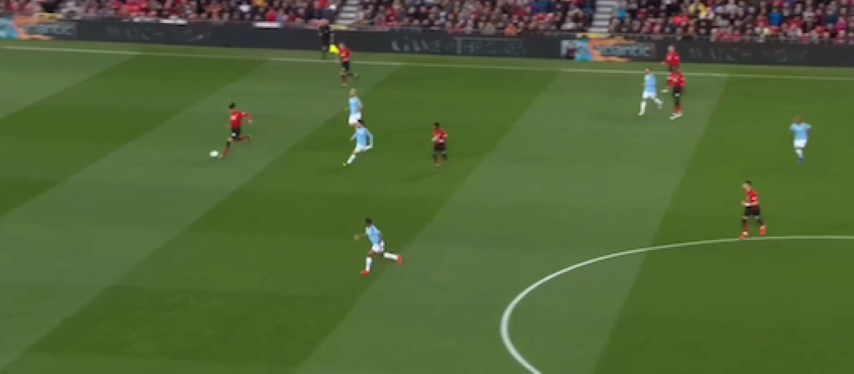
...Every single player is under pressure and involved in a 1 v 1 duel, even after a switch of side (Sterling in pressing the opposition right center back here)...
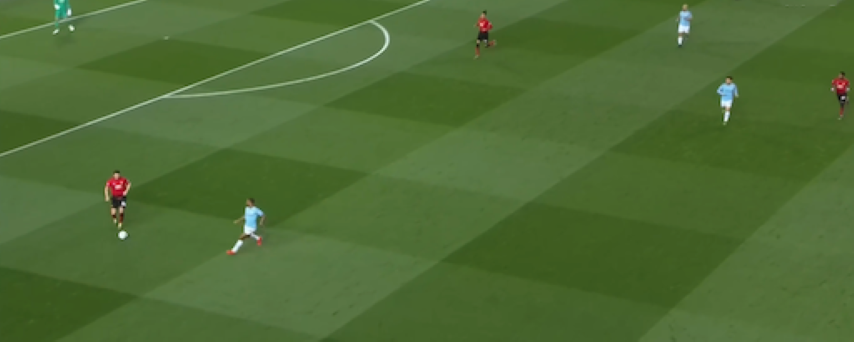
...And Zichenko counters the opposition right full back, tackling him while controlling the ball...
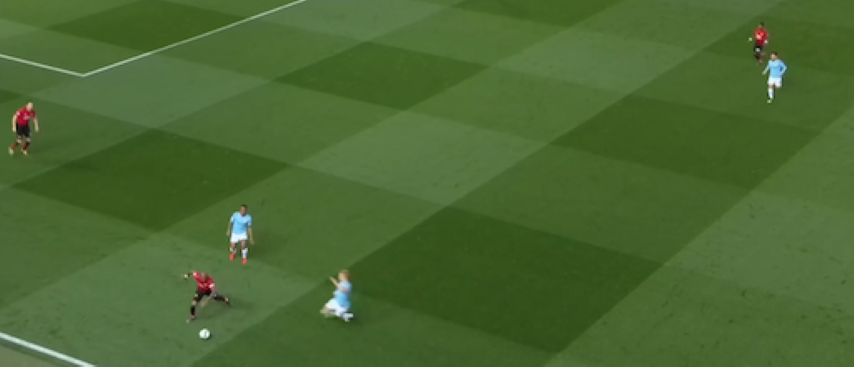
(if Liverpool aims to keep a defensive shape behind the first pressing player, Manchester City defensive phase doesn't take into consideration the team shape in the same way, as the pressure against all the ball carriers is the first objective)
...The recovery of possession is always the main aim of Man City (Sterling saves the possession, passing the ball toward the nearest teammate and easiest option)...
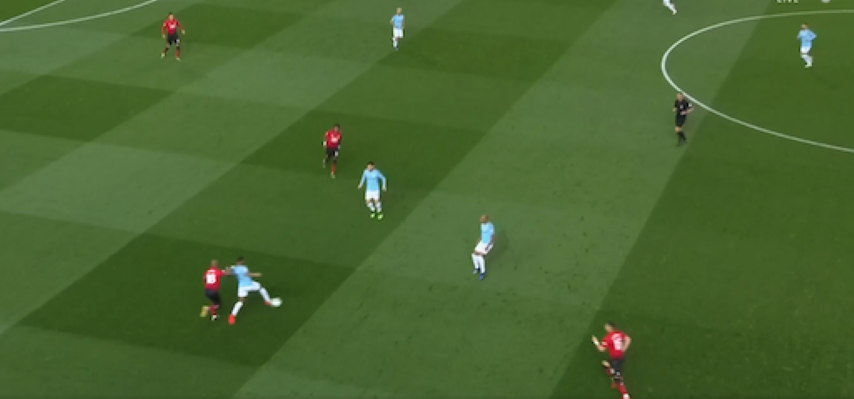
...An holding midfielder (Fernandinho here) is always just out of the overload area to ensure support, during transitions to attack...
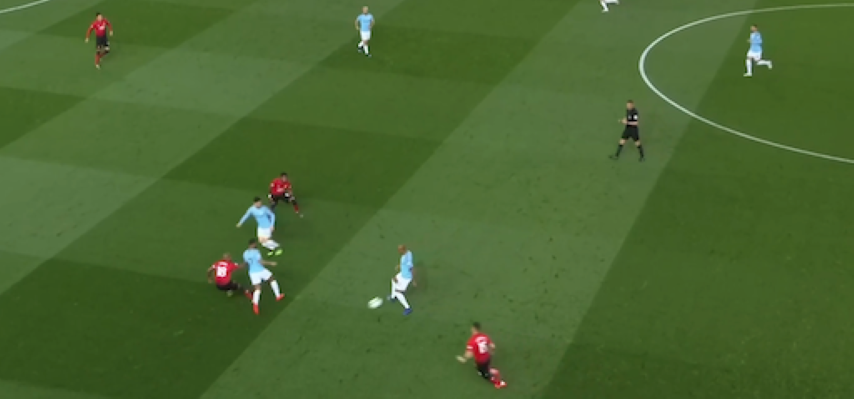
...As City tries always to stay placed high on the pitch, there are often several options to attack again just after few touches from the ball recovery (Zichenko, who countered the last opposition ball carrier of the opposition, can receive out wide and play forward; 6 City players are already placed inside the attacking half).
